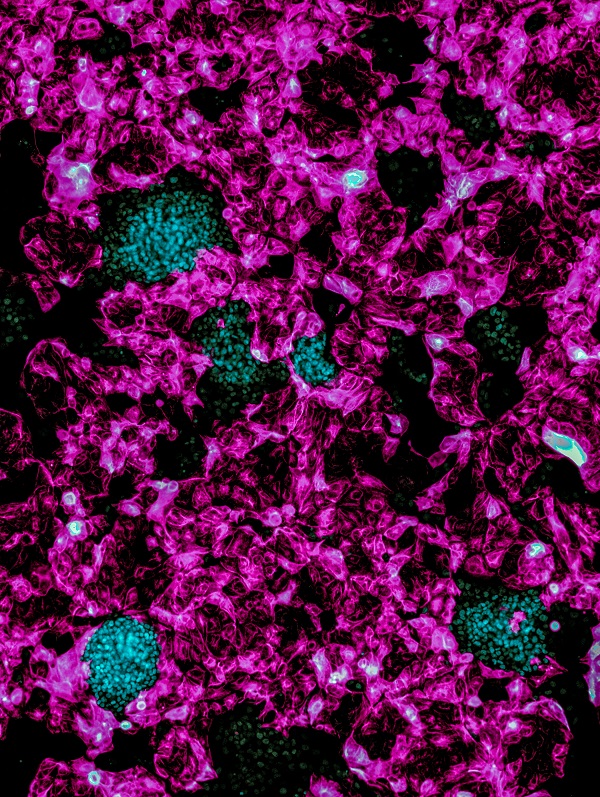Media release
From: Monash UniversityA new discovery in regenerative medicine
An international collaboration involving Monash University and Duke-NUS researchers have made an unexpected world-first stem cell discovery that may lead to new treatments for placenta complications during pregnancy.
While it is widely known that adult skin cells can be reprogrammed into cells similar to human embryonic stem cells that can then be used to develop tissue from human organs - known as induced pluripotent stem cells (iPSCs) - the same process could not create placenta tissue.
iPSCs opened up the potential for personalised cell therapies and new opportunities for regenerative medicine, safe drug testing and toxicity assessments, however little was known about exactly how they were made.
An international team led by ARC Future Fellow Professor Jose Polo from Monash University’s Biomedicine Discovery Institute and the Australian Research Medicine Institute, together with Assistant Professor Owen Rackham from Duke-NUS in Singapore, examined the molecular changes the adult skin cells went through to become iPSCs. It was during the study of this process that they discovered a new way to create induced trophoblast stem cells (iTSCs) that can be used to make placenta cells.
This exciting discovery, also involving the expertise of three first authors, Dr. Xiaodong Liu, Dr. John Ouyang and Dr. Fernando Rossello, will enable further research into new treatments for placenta complications and the measurement of drug toxicity to placenta cells, which has implications during pregnancy.
“This is really important because iPSCs cannot give rise to placenta, thus all the advances in disease modelling and cell therapy that iPSCs have brought about did not translate to the placenta,” Professor Polo said.
“When I started my PhD five years ago our goal was to understand the nuts and bolts of how iPSCs are made, however along the way we also discovered how to make iTSCs,” said Dr Liu.
“This discovery will provide the capacity to model human placenta in vitro and enable a pathway to future cell therapies,” commented Dr Ouyang.
“This study demonstrates how by successfully combining both cutting edge experimental and computational tools, basic science leads to unexpected discoveries that can be transformative,” Professor Rackham said.
Professors Polo and Rackham said many other groups from Australian and international universities contributed to the study over the years, making it a truly international endeavour.
Read the full paper in Nature Journal titled: Reprogramming roadmap reveals route to human induced trophoblast stem cells
DOI: 10.1038/s41586-020-2734-6
About the Monash Biomedicine Discovery Institute at Monash University
Committed to making the discoveries that will relieve the future burden of disease, the newly established Monash Biomedicine Discovery Institute at Monash University brings together more than 120 internationally-renowned research teams. Our researchers are supported by world-class technology and infrastructure, and partner with industry, clinicians and researchers internationally to enhance lives through discovery.
About The Australian Regenerative Medicine Institute at Monash University
The Australian Regenerative Medicine Institute is one of the largest regenerative medicine and stem cell research organisations in the world and Australia’s only research institute specialising in regeneration and stem cells. Located on the Clayton campus of Monash University, researchers at ARMI focus on understanding the basic mechanisms of the regenerative process, aiming to eventually enable doctors to prevent, halt and reverse damage to vital organs due to disease, injury or genetic conditions.
About the Duke-NUS Medical School
Duke-NUS is Singapore’s flagship graduate entry medical school, established in 2005 with a strategic, government-led partnership between two world-class institutions: Duke University School of Medicine and the National University of Singapore (NUS). Through an innovative curriculum, students at Duke-NUS are nurtured to become multi-faceted ‘Clinicians Plus’ poised to steer the healthcare and biomedical ecosystem in Singapore and beyond. A leader in ground-breaking research and translational innovation, Duke-NUS has gained international renown through its five signature research programmes and eight centres. The enduring impact of its discoveries is amplified by its successful Academic Medicine partnership with Singapore Health Services (SingHealth), Singapore’s largest healthcare group. This strategic alliance has spawned 15 Academic Clinical Programmes, which harness multi-disciplinary research and education to transform medicine and improve lives.
For more information, please visit www.duke-nus.edu.sg


